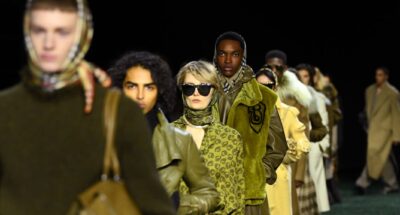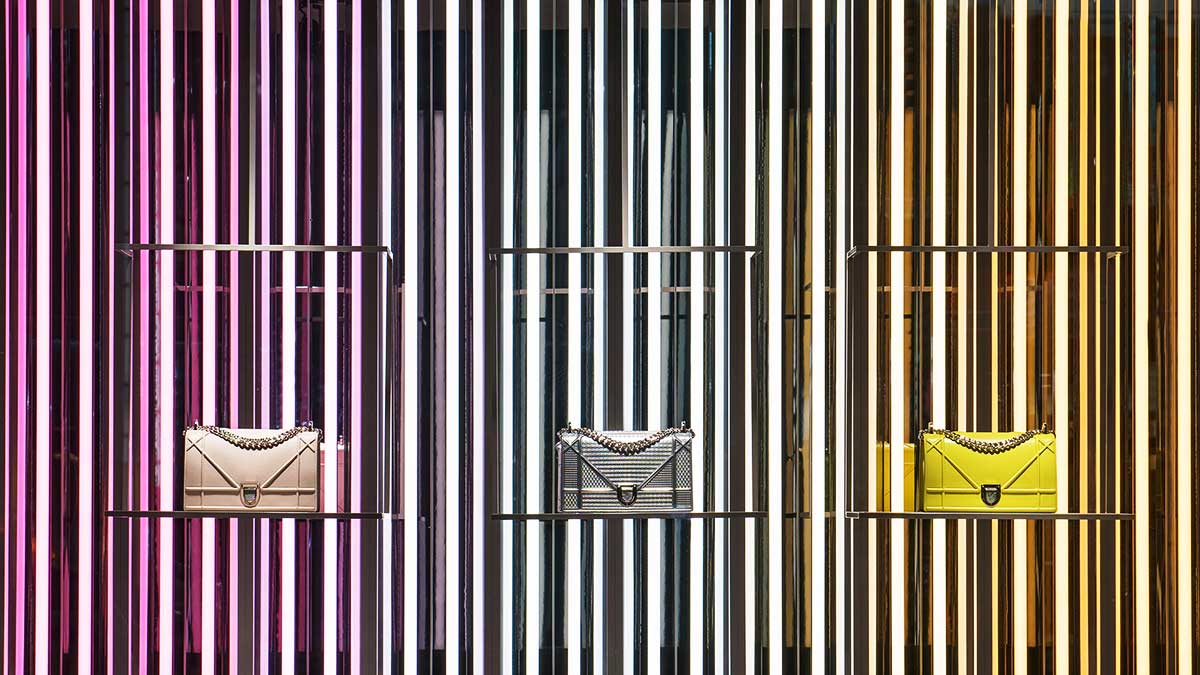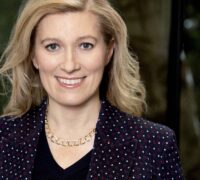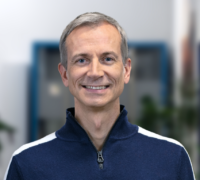
Herding the fashion crowd to greener pastures
Smarter regulation is required to nudge luxury brands into a more sustainable future, industry experts tell Stéphane Girod....

by Stéphane J. G. Girod, Renaud Falgas Published 17 October 2023 in Luxury • 10 min read
Today’s key players in luxury sectors are collaborating with some of the most exciting start-ups in the sustainability space, to address the urgent need to reduce their emissions. Why is this so vital? Because the luxury industries have scaled up massively in the last 30 years, resulting in an explosion of greenhouse gas emissions from Scope 3 activities – those which are outside firms’ own boundaries, such as transportation and waste disposal.
Let us remind ourselves that most scientists think we are likely to go way above the Paris Agreement’s 1.5°C increase in global temperatures. If we do not accelerate our combined efforts to reduce these emissions, we are looking at a near-future scenario where summer temperatures reach 50°C degrees for four consecutive months every year. The natural world is not geared up to adapt at this pace and the number of species is rapidly plummeting. On six of the nine planetary boundary limits, we are already living beyond our means to sustain our ways of life. So what can be done?
Our hope lies not just in technological solutions but in how quickly humans adopt them. Not only does it take time for the technologies to reach maturity and their full potential, there must be enough willingness and determination to move fast enough to mitigate the oncoming disaster. And there are no certainties. Any new technology has unforeseen consequences and what is positive on one dimension of sustainability can have negative effects on another – typically, on the social and socioeconomic dimensions, for those people directly affected in the short term by, for example, falling oil prices.
For business leaders, there is a personal challenge on top: CEO tenure is short and yet they are required to take decisions now for the long term, when they will no longer even be in office. This requires a radical new mindset and a vision that sees far beyond short-term returns. Are our leaders prepared to take the bold decisions that the world needs?
Thankfully, there are some excellent examples of leaders who are doing just that. For the second meeting of our Luxury Forum 2050, we were honored to be joined by Marie-Claire Daveu, Chief Sustainability and Institutional Affairs Officer at the global luxury group Kering, whose brands include Gucci and Saint Laurent, and Jan Huckfeldt, Chief Commercial Officer at Climeworks, which has developed a technology to directly remove carbon dioxide from the air. These two guests – one at the forefront of business efforts and the other on the technology side – shared their progress and some of the challenges that luxury brands face as they journey to positive impact.
Kering placed sustainability at the core of its strategy 15 years ago, long before any hint of mandatory reporting, when its Chairman and CEO realized that sustainability is not only a moral imperative, it also makes good business sense. The group has set sustainability targets using a pioneering tool that enables them to measure carbon emissions, air and water pollution, biodiversity and waste production, not just within their legal boundaries but across the whole supply chain, with transparent profit and loss (EP&L).
“We are able to measure and understand in detail where our impacts are,” explained Daveu. “This is the cornerstone of our sustainability strategy. It’s essential to give sustainability performance a monetary value, combining it with financial performance.” She has noticed an important shift, she said, when it comes to investment: aspects of sustainability, such as biodiversity and water scarcity, are now linked with risk management. “Even in countries where the regulation is not there, these criteria are becoming more key, so it’s a virtuous circle.” The new regulation CSRD will reinforce this approach with the double materiality”.

Kering has recently launched two sustainability funds – the Regenerative Fund for Nature, in collaboration with Conservation International, the target of which is to transform conventional practices into regenerative practices, and the Climate Fund for Nature, with L’Occitane Group, to mobilize finance from the beauty and luxury sector to protect and restore nature. The Climate Fund for Nature is already worth €140m and its target is to reach €300m in 2024. The group also has its own well-established innovation labs, which continually look to develop sustainable materials and products that are still at the highest end of quality. “Our strategy is concrete and operational,” Daveu said.
Touching on the subject of changing consumer attitudes, Daveu identified two types of customers – Gen Z and Millennials, who ask more and more questions about sustainability, the traceability of raw materials and so on, and actively demand change, and the more traditional luxury clients, who may be less vocal, but place their trust in the brand. For both segments, it is essential that sustainability be in your DNA and a genuine imperative. Brand equity can be destroyed in an instant if you get this wrong.
Jan Huckfeldt pulled no punches when it came to the need for twofold immediate action – reducing emissions, while also capturing the CO2 that is already in the atmosphere. “Even net zero is a dramatic situation,” he explained. “The last time our planet experienced a CO2 concentration of above 400ppm was three million years ago.Then, temperatures were 3°-5°C higher, the oceans were acidic, and the air was not breathable for humans. We need to pull down the CO2 to get into a safe zone again. By 2050, we need to dramatically reduce our thirst for energy, rely heavily on renewables, and to have removed between five and 15 billion tonnes of carbon. Today, there are insufficient technologies to achieve that.”
“Nature-based technologies are very important, but they are not scalable and they only work on the short carbon cycle. We need to find and develop technologies which lock the carbon away for thousands, if not millions, of years.” Climeworks, which has its first industrial-scale operation in Iceland, does this through direct air capture; it pulls air over a sorbent which selectively captures the CO2. Once the filter containers are saturated, Climeworks uses geothermal heat to isolate the pure CO2, which is then, in consecutive steps, mixed with water and injected into basalt rock hundreds of meters underground, where it mineralizes to calcite (latter step with its partner Carbfix). “What used to be CO2 out in the atmosphere is ultimately turned into stone, locked away.” The challenge is to scale up dramatically, in a very short space of time, and this is where partnerships come in. Climeworks has already partnered with JP Morgan, Microsoft, UBS, BCG, Swiss Re, Audi, and others.
Daveu acknowledged that even with a bold vision and rapidly transforming business models, Kering will still produce some residual emissions. “That’s why we are using carbon credits, but with the highest standard possible. Today at Kering, we are working with more than 250 start-ups to innovate. The biggest challenge is quality. We are in the luxury sector – we have to ensure the highest quality still. A new tech or a new raw material can be challenging because it’s nearly perfect, but it’s not quite perfect.”
More than 90% of impact falls outside Kering’s own operation: 70% is linked to raw material and production – where the leather and silk used in their products is coming from, where the cashmere is produced. The company has set ambitious new targets: to reduce its Scope 1 and 2 emissions by 90%; to reduce its Scope 3 emissions by 70%; and to reduce its absolute greenhouse gas emissions by 40% by 2035 overall.
By 2050, we need to dramatically reduce our thirst for energy, rely heavily on renewables, and to have removed between five and 15 billion tonnes of carbon.- Jan Huckfeldt, Chief Commercial Officer at Climeworks
“We know that if we want to reach this target, we will have to speak about fair production and raw materials, and to continue to have the same profitability to put in place new business models, such as second-hand. We all need to accelerate,” she stressed. Kering’s jewelry house Boucheron now has a trust system for diamonds, with a target of 100% traceability for its gold, platinum, and raw gemstones by 2025. The group has also been working with Fashion For Good for years, as well as Plug and Play with a particular focus in China.
Technology is essential to this agenda, she added. “First, it is very clear for us that we won’t be able to reach our target without sustainable innovation and new technologies. We need disruptive innovations. One example is that to have fair production, we will be using artificial intelligence to predict the right quantities and adjust production accordingly. Then, to implement social criteria on the ground, we need blockchain technology. We also require biotech for new materials and sustainable processes, so we are investing in eco-dyeing, for example, using microorganisms.”
The social dimension of ESG is not to be overlooked. Climeworks has just announced a large project to build a CO2 removal installation in Kenya, and another in Louisiana. Both of these will create wealth and employment in underprivileged areas. The Louisiana project is backed by the US Department of Energy. “We are helping to reskill workers in that area and build a clean technology where there used to be oil and gas,” he said.
Climeworks itself uses only clean energy and its technology is 100% measurable. It is about to go into full industrial scale, and together with Puro.earth, is developing a certification methodology. “It is a race against time: our installations need to be bankable and we need to get the investment support behind this, which means interest from the private sector.”
Carbon offsetting will not be enough, Huckfeldt warns. Rather, companies must focus on reduction and removal. Your sustainability strategy is inadequate if you are not directly reducing your emissions and removing your unavoidable emissions. As Daveu pointed out: “The best energy is the energy we don’t use.”
What’s the bottom line? A portfolio of technological initiatives is required right now to avoid the worst of climate change. The window of opportunity to accelerate action is closing. But as yet, luxury brands should not bank on technology alone, since the gap between their maturity and scale is so high that more radical business model transformation, including responsible consumption and fair production, must now be on decision-makers’ radar.

Chief Sustainability and Institutional Affairs Officer at Kering
Marie-Claire Daveu is a pioneer and recognized leader in sustainability. She has been Chief Sustainability Officer and Institutional Affairs Officer at Kering since 2012. She sets out the strategy and ambitious objectives, as well as implementing a set of best practices within the group and the houses. She was formerly a Chief of Staff of different ministers at the French government, and Director of Sustainable Development for the Sanofi-Aventis Group.

Chief Commercial Officer at Climeworks
Jan Huckfeldt started his career at Procter & Gamble first in R&D, then in brand manager roles, before moving to Hewlett Packard, where he became Vice President of Marketing and Head of e-Commerce EMEA. In 2007, he joined Lenovo as Vice President of Marketing, then became Global CMO of Motorola in 2016. In 2018, he joined Ledger as the Chairman Advisory Board before joining Climeworks as the Chief Commercial Officer in 2022.

Professor of Strategy and Organizational Innovation
Stéphane J.G. Girod is Professor of Strategy and Organizational Innovation at IMD. His research, teaching and consulting interests center around agility at the strategy, organizational and leadership levels in response to disruption. At IMD, he is also Program Director of Reinventing Luxury Lab and Program Co-Director of Leading Digital Execution.

Underwriter Financial Lines at Chubb
Renaud Falgas is a co-founder and board member of the IMD Luxury 2050 Forum. He brings not only his strong passion for sustainability, but also great insights gained through his 17+ years of industry working, teaching, and start–up advisory experiences. Before switching to financing industry in 2023, Renaud worked in leadership roles overseeing strategic international projects at Swatch Group, Nestlé, and Nespresso, focusing on supply chain, sustainability, and digital transformation. Besides full-time working in industry, Renaud also teaches Supply Chain and Operations at Business School Lausanne, to inspire and empower younger generations. He also advises start–up companies. He takes great interest in venture capital, as he sees the need and power of diverting capital allocation into technology and innovations to solve the world’s most challenging issues. He holds a Master’s degree in Environmental Sciences and Engineering from EPFL. Renaud has also obtained an Executive MBA from IMD.

30 September 2024 • by Stéphane J. G. Girod in Future of Luxury
Smarter regulation is required to nudge luxury brands into a more sustainable future, industry experts tell Stéphane Girod....

26 July 2024 • by Stéphane J. G. Girod, Rui Meng, Hui Zhang in Future of Luxury
Never heard of NIO? Those who haven’t are set to become few and far between, as the electric vehicle (EV) maker continues its fast and furious rise into the world’s top premium...

11 July 2024 • by Stéphane J. G. Girod in Future of Luxury
A series of watershed events forced CHANEL out of its comfort zone, culminating in the launch of CHANEL Mission 1.5°. With this new strategy, the luxury fashion house embarked on a journey...

27 March 2024 • by Stéphane J. G. Girod, Roberto Eggs, Rui Meng in Future of Luxury
What does it mean to be excellent, not perfect, in 2024, and why should luxury brands weave the answer into their strategy? ...
Explore first person business intelligence from top minds curated for a global executive audience